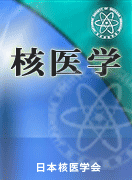Volume 54, Issue 1
Displaying 1-31 of 31 articles from this issue
- |<
- <
- 1
- >
- >|
Technical Report
-
2017 Volume 54 Issue 1 Pages 545-549
Published: 2017
Released on J-STAGE: April 12, 2017
Download PDF (524K)
Report
-
2017 Volume 54 Issue 1 Pages 509-519
Published: 2017
Released on J-STAGE: February 24, 2017
Download PDF (637K) -
2017 Volume 54 Issue 1 Pages 579-586
Published: 2017
Released on J-STAGE: July 21, 2017
Download PDF (2077K) -
2017 Volume 54 Issue 1 Pages 603-621
Published: 2017
Released on J-STAGE: August 02, 2017
Download PDF (3103K)
Report From Working Grope
-
2017 Volume 54 Issue 1 Pages 603-607
Published: 2017
Released on J-STAGE: August 22, 2017
Download PDF (15672K) -
2017 Volume 54 Issue 1 Pages 649
Published: 2017
Released on J-STAGE: September 06, 2017
Download PDF (167K)
Abstracts from the Subcommittee Meeting
-
2017 Volume 54 Issue 1 Pages 569-572
Published: 2017
Released on J-STAGE: May 23, 2017
Download PDF (606K)
-
2017 Volume 54 Issue 1 Pages 593-595
Published: 2017
Released on J-STAGE: July 21, 2017
Download PDF (444K) -
2017 Volume 54 Issue 1 Pages 597-601
Published: 2017
Released on J-STAGE: July 21, 2017
Download PDF (572K) -
2017 Volume 54 Issue 1 Pages 681-683
Published: 2017
Released on J-STAGE: November 13, 2017
Download PDF (474K) -
2017 Volume 54 Issue 1 Pages 685-689
Published: 2017
Released on J-STAGE: November 13, 2017
Download PDF (597K)
Abstracts from the Regional Meeting
-
2017 Volume 54 Issue 1 Pages 651-653
Published: 2017
Released on J-STAGE: September 14, 2017
Download PDF (599K)
-
2017 Volume 54 Issue 1 Pages 533-540
Published: 2017
Released on J-STAGE: March 27, 2017
Download PDF (747K) -
2017 Volume 54 Issue 1 Pages 639-647
Published: 2017
Released on J-STAGE: September 04, 2017
Download PDF (810K)
-
2017 Volume 54 Issue 1 Pages 563-567
Published: 2017
Released on J-STAGE: June 15, 2017
Download PDF (599K) -
2017 Volume 54 Issue 1 Pages 661-663
Published: 2017
Released on J-STAGE: September 12, 2017
Download PDF (588K)
-
2017 Volume 54 Issue 1 Pages 665-674
Published: 2017
Released on J-STAGE: October 10, 2017
Download PDF (843K)
-
2017 Volume 54 Issue 1 Pages 635-637
Published: 2017
Released on J-STAGE: September 04, 2017
Download PDF (523K)
-
2017 Volume 54 Issue 1 Pages 541-544
Published: 2017
Released on J-STAGE: March 27, 2017
Download PDF (545K)
Mutual Introduction
Introduction of the current papers in the Chinese Journal of Nuclear Medicine and Molecular Imaging
-
2017 Volume 54 Issue 1 Pages 501-508
Published: 2017
Released on J-STAGE: February 10, 2017
Download PDF (327K) -
2017 Volume 54 Issue 1 Pages 521-525
Published: 2017
Released on J-STAGE: March 27, 2017
Download PDF (259K) -
2017 Volume 54 Issue 1 Pages 527-531
Published: 2017
Released on J-STAGE: March 27, 2017
Download PDF (273K) -
2017 Volume 54 Issue 1 Pages 551-555
Published: 2017
Released on J-STAGE: April 13, 2017
Download PDF (279K) -
2017 Volume 54 Issue 1 Pages 557-561
Published: 2017
Released on J-STAGE: May 18, 2017
Download PDF (293K) -
2017 Volume 54 Issue 1 Pages 573-577
Published: 2017
Released on J-STAGE: June 03, 2017
Download PDF (284K) -
2017 Volume 54 Issue 1 Pages 587-592
Published: 2017
Released on J-STAGE: July 22, 2017
Download PDF (299K) -
2017 Volume 54 Issue 1 Pages 629-633
Published: 2017
Released on J-STAGE: September 04, 2017
Download PDF (296K) -
2017 Volume 54 Issue 1 Pages 655-660
Published: 2017
Released on J-STAGE: September 21, 2017
Download PDF (332K) -
2017 Volume 54 Issue 1 Pages 675-680
Published: 2017
Released on J-STAGE: October 11, 2017
Download PDF (311K) -
2017 Volume 54 Issue 1 Pages 691-696
Published: 2017
Released on J-STAGE: November 21, 2017
Download PDF (317K) -
2017 Volume 54 Issue 1 Pages 697-702
Published: 2017
Released on J-STAGE: December 08, 2017
Download PDF (330K)
- |<
- <
- 1
- >
- >|
